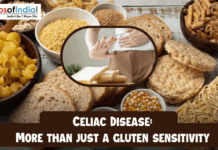What is Cholesterol?
All your body’s cells contain cholesterol, a waxy, fatty-like material. Producing hormones, vitamin D, and compounds that aid in food digestion requires a certain amount of cholesterol in your body. Your body produces all the cholesterol it requires. Egg yolks, beef, and cheese are just a few examples of foods made from animals that contain cholesterol. Plaque can form when excess cholesterol combines with other blood constituents. Your artery walls get covered in plaque. Atherosclerosis is the term for this plaque development. Your coronary arteries may get progressively narrower or even blocked, resulting in coronary artery disease.
To meet your body’s demands, your liver produces adequate cholesterol. However, the things you eat might also increase your cholesterol levels. This may lead to an increase in blood cholesterol levels. You could get into trouble at that point due to health issues. Even cholesterol itself is not harmful. For you to survive, it is necessary. However, having too much cholesterol may be dangerous. Learning about cholesterol, its uses, and its different forms is crucial. Understanding why you need cholesterol, but not too much of it can be made easier with this understanding. It can also assist you in comprehending the significance of your cholesterol readings and how to minimize them if necessary.
What Is LDL, HDL, and VLDL?
For your body to function, this cholesterol is necessary. However, consuming too much of it is harmful to your health. Due to the necessity for additional lipoproteins to take up and transport excess cholesterol, see below. With the help of proteins, cholesterol is transported through the blood. Lipoprotein is the name given to this mixture of proteins and cholesterol. Based on what the lipoprotein transports, there are many forms of cholesterol.
-
LDL
The “bad” cholesterol LDL carries cholesterol granules all over your body. Your arteries become hard and restricted as a result of LDL cholesterol buildup. Your arteries’ inner walls may accumulate due to their ability to combine with other substances. As time passes, a plaque is created from these fatty deposits. It increases your risk of having a heart attack, stroke, and other illnesses. This way of plaque formation is atherosclerosis.
-
HDL
The “good” cholesterol HDL collects extra cholesterol and transports it back to your liver. Your liver eliminates the cholesterol by dissolving it. It is known as reverse cholesterol transport. You want to maintain a high level of HDL cholesterol. Aim for an HDL level of at least 40 mg/dL if you are a man. An HDL of at least 50 mg/dL is recommended for women and those designated female at birth.
-
VLDL
Very low-density lipoproteins, or VLDL cholesterol, are these. VLDLs carry triglycerides and cholesterol, and little protein is seen in them. Similar to LDLs, they are “bad” because they can cause your arteries to become clogged with plaque. However, VLDL and LDL differ; VLDL mostly transports triglycerides, while LDL primarily carries cholesterol.




